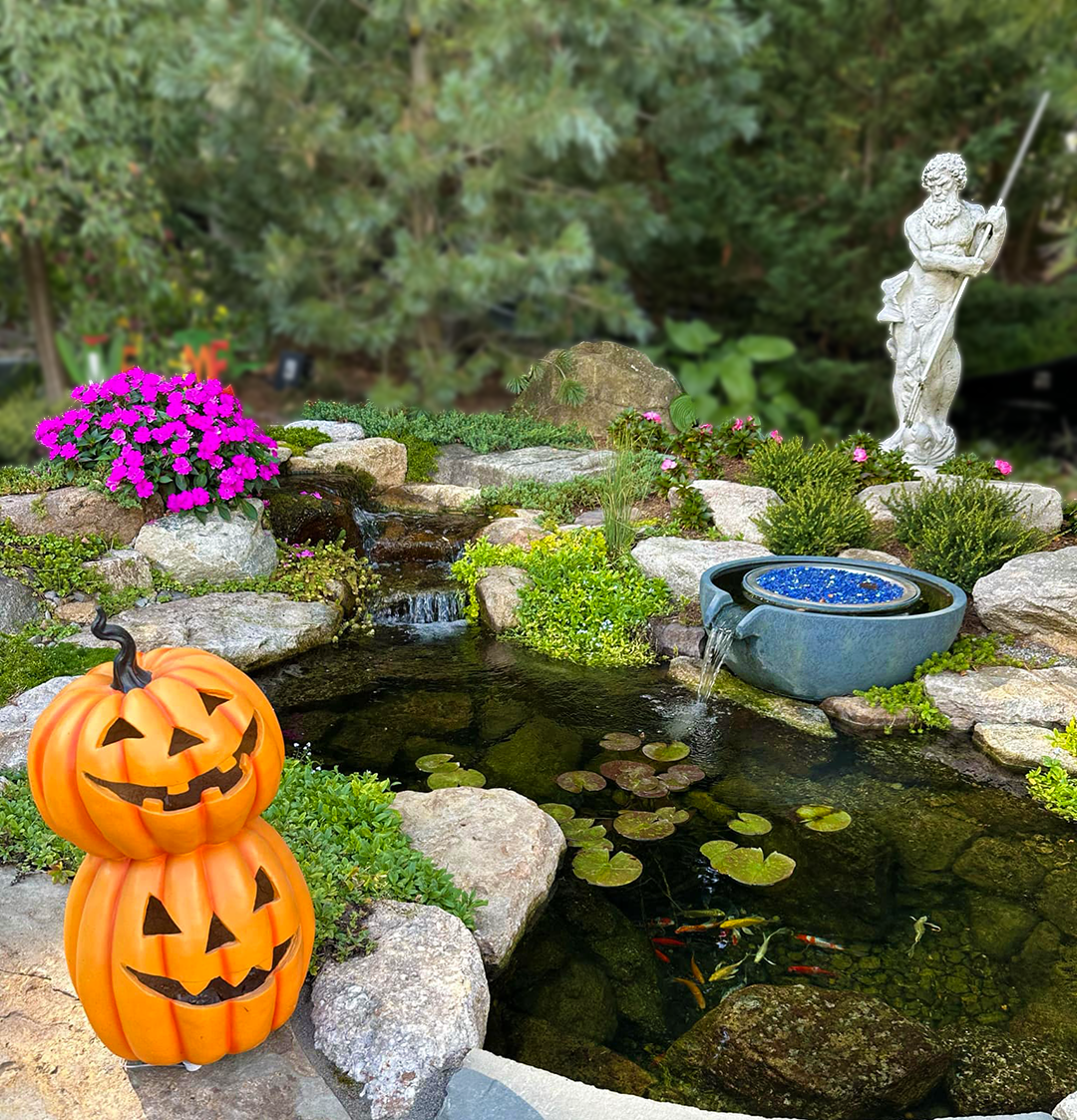
How can I do fall pond maintenance in New Jersey? (7 best tips)
TL;DR:
Before New Jersey temps drop below 50°F, clean debris, trim plants, and switch koi to a fall diet. Proper fall pond maintenance prevents winter problems and keeps your pond healthy year-round. 🐠
Why fall pond maintenance matters in New Jersey
Autumn is beautiful here in New Jersey—but your pond might disagree. 🍁 Falling leaves, cooler temps, and shorter days can upset your pond’s balance. Without prepping now, you’ll face cloudy water and stressed fish in spring. Fall pond maintenance is about protecting your investment—and your koi—before the cold arrives.
1️⃣ Cover it before the leaves do
A pond net is your best friend this season. Stretch it across the surface before trees start shedding to catch debris and acorns.
Pro tip: Use a frame or tented net setup so debris rolls off instead of sinking.
2️⃣ Remove sludge and debris
Scoop out leaves and muck using a pond skimmer or vacuum. This prevents decay that can harm fish during winter.
-
Vacuum pond bottoms
-
Rinse rocks and gravel gently
-
Don’t overclean—preserve some beneficial bacteria
3️⃣ Trim and tidy your plants
Cut back hardy pond plants and move tender ones indoors. Dead foliage decomposes quickly, adding unwanted nutrients that can lead to algae blooms later.
4️⃣ Switch to cool-weather koi food
When water temps fall below 60°F, feed your koi a wheat germ formula. It’s easier to digest and prevents bloating as their metabolism slows. Stop feeding completely once temps drop below 50°F.
5️⃣ Clean filters and check pumps
Rinse your filter pads, check tubing for clogs, and inspect your pump intake. Consistent flow keeps oxygen levels stable and prevents surface ice buildup.
6️⃣ Test and treat your water
Fall is the perfect time to balance your pond’s chemistry:
-
pH: 7.0–8.0
-
Ammonia: 0 ppm
-
Nitrates: < 40 ppm
-
Add a beneficial bacteria treatment to help break down remaining waste.
7️⃣ Prepare for winter shutdown
Once water temps drop below 40°F:
-
Remove or raise your pump if your pond is shallow
-
Add a de-icer or aerator to keep a hole in the ice
-
Stop feeding and let your koi rest for the season
🍁 Bonus: After-storm checkups
New Jersey’s fall storms—especially around Morris County and Essex County—can dump debris fast. After heavy winds or rain, inspect your pond net and skimmer baskets.
💧 Need help with fall pond maintenance in New Jersey?
Our team at Atlantis Water Gardens makes it easy. From netting and filter cleaning to full pond winterization, we’ll get your water feature ready for the cold months ahead. Schedule your fall pond maintenance service today!
🧠 FAQ
Q: When should I start fall pond maintenance in Randolph, NJ?
Start around late September to early October—before peak leaf fall. The earlier you prep, the easier your pond will handle the temperature drop.
Q: Do I need to keep my koi pond running all winter in Millburn, NJ?
If your pond is over 3 feet deep, yes. Otherwise, remove or raise your pump to prevent freezing and damage.
Q: How often should I clean my pond filter in Short Hills during fall?
Every 2–3 weeks, depending on debris buildup. Clean filters maintain good flow and water clarity through the season.
Q: Can I still feed my koi in Livingston, NJ once the water cools?
Only until water temps reach 50°F. Then, stop feeding—your koi will naturally slow down for winter.
Author: Atlantic Water Gardens – Jesse
Updated: October 2025
Local Expertise: Morris County, Essex County, and surrounding areas
Looking for more great tips, tricks and quality content? Check out our YouTube Channel!
Looking for more tips and tricks for your New Jersey pond or water feature?
How can I do fall pond maintenance in New Jersey? 7 steps